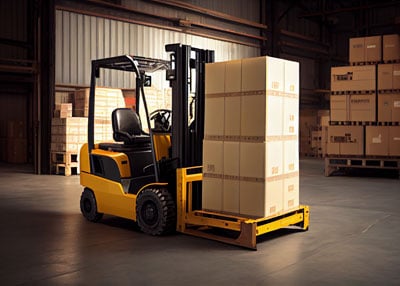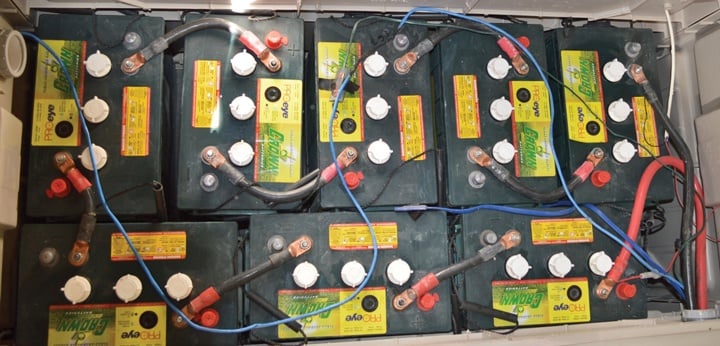AGM batteries were invented for the aerospace industry – and they’ve reached new technological heights since then.
Here’s what you need to know about AGM batteries in 2023:
Originally designed for aviation, AGM batteries are sealed for safe and leak-free operation in the air – where reliability is a matter of life or death. These batteries are also near-zero maintenance and 99% recyclable (source: US EPA).
Next-gen AGM batteries are reinvented with 3D printing, computer-assisted modeling, and robotic assembly. The latest engineering and manufacturing practices improve lifespan, reliability, affordability, and performance.
But some AGM batteries still use cheap, last-gen R&D and manual assembly – and you pay the price with shorter life and breakdowns.
Today, you’ll learn how to select modern AGM batteries in 2023, including:
- The pros and cons of AGM batteries
- Which specs matter (in Plain English)
- How to maximize efficiency and reliability – and minimize downtime, replacements, and maintenance
- How quality control varies among manufacturers, and affects your performance and maintenance
- Which last-generation assembly techniques and materials to avoid
- Questions that prevent warranty nightmares
What Is An AGM Battery? (Pros and Cons)
AGM batteries are sealed batteries and are more recycled than an aluminum can. They’re made of recyclable materials, including ultra-thin fiberglass mats saturated with liquid electrolyte. Their design provides extra structural support against vibration and shock. And that makes AGM batteries more durable, especially in mobile applications where equipment moves.
Compared to flooded lead-acid batteries, AGM batteries offer near-zero maintenance, a lower self-discharge rate, enhanced cold temperature performance, and can accept charge faster.
And compared to lithium-ion and lithium-iron-phosphate batteries, AGM batteries provide improved safety and recyclability, along with a lower up-front and lifetime cost of ownership.
These benefits – and the time and money saved with almost no routine maintenance – make AGM batteries the right fit for many, but not all, applications.
When selecting an AGM battery in 2023, you’ll want to consider specifications
Specifications such as the battery’s voltage, capacity (amp hours), reserve capacity (RC) rating, and intended use are what you want to look at. We’ll show you how to compare features and manufacturers in a minute.
How much power does your equipment require? You’ll need AGM batteries with enough energy to perform all of the tasks you need. Our energy storage team can walk you through these calculations, but here are the basics...
Capacity measures how much energy the battery can store and deliver. We measure capacity in Amp-hours (Ah) -- how much current can be discharged from the battery before recharging. Higher AH ratings generally indicate a larger battery size.
Reserve Capacity (RC) indicates the amount of time the battery can provide a particular current level before its voltage drops below a threshold. In other words, RC indicates how long the battery will last under continuous discharge conditions.
Voltage ratings should match your application’s requirements.
Depth of Discharge (DOD) is how much of a battery’s energy can safely be used.
Some companies advertise 80% - 100% DOD (i.e., you can drain all but 0% - 20% of power). But every battery needs extra power -- in case you use more energy or can’t recharge as often. And extreme deep-discharging slashes battery life.
For renewable energy applications, size batteries for 50% DOD. And for other applications, check with battery experts.
Whatever battery type you select, compare battery pricing using identical DOD levels – or you could overpay or run out of power.
Compare batteries with these tips
R&D, Manufacturing, and Your Wallet
How will your batteries perform in the real world?
While all AGM batteries operate using the same basic chemistry principles, there’s a performance chasm between batteries made using 3D R&D and robotic manufacturing – versus last-generation designs and inaccurate manual assembly.
Better engineering, testing, robotic assembly, and raw materials improve durability and real-world capacity.
And those differences in engineering, manufacturing, and testing all affect your day-to-day life and your replacement budget.
“Cheaper is not better.” Better is better – and it’s often cheaper in the long run.
(For a 5-minute guide to which battery construction methods matter, check out North American Clean Energy’s “Find the Battery You Need.”)
Tip: Check about safety
AGM batteries are designed to resist spills, leaks, and explosions. And that makes them a solid option for businesses, homes, and confined spaces. Unlike many lithium-ion batteries, AGM batteries are even trusted in high-risk applications, from commercial aviation to mining operations.
All batteries (including AGM) contain potentially hazardous materials. Your battery distributor or installer can walk through how any battery system you install complies with local and federal health, safety, and environmental regulations –– including eventual recycling.
In addition to local regulations, check for any specific battery installation rules in your area or industry. Fortunately, AGM batteries are typically easier to install and transport. For example: IATA (International Air Transport Association) requires special (more expensive) handling for shipping and storing Li-ion batteries on aircraft; and NFPA 1124 applies additional preventative safety measures when installing vehicle lithium-ion batteries in buildings.
Whatever batteries you select, never install any batteries near open flames, sparks, or any other sources of heat.
Tip: Choose sustainable batteries with less waste
All batteries have an environmental and carbon footprint. Crown’s AGM batteries minimize this impact by using 80% recycled materials, 100% renewable energy for manufacturing, and an extensive water-recycling program.
(Learn more about our sustainability efforts – and compare them to industry standards here:
https://www.crownbattery.com/sustainability)
Quality Control matters
It’s simple: Batteries made to higher quality control specs tend to perform better and more reliably for more years.
Compare other manufacturers to Crown Battery’s 250-Point Quality Control inspection, which includes:- Vision testing using computerized “scanning eyes” originally developed for aerospace
- Independent, third-party testing of batteries at random from the assembly line (not “model” batteries from the laboratory)... including x-ray diffusion and scanning electron microscopy
- Robotic seal testing ensures batteries will not leak when properly installed
We also test, monitor, and dissect thousands of batteries across North America – to ensure long-term performance and improve our products. Whatever company you choose should have a similar testing program.
tip: Consider adding a Battery Management System (BMS) and smart charger
BMS helps protect batteries from damage due to overcharge, over-discharge, and other conditions. This computerized system monitors and records cell and ambient temperature, voltage, current and capacity data, and more. And that helps ensure efficient operations and extend battery life.
Periodically check AGM batteries for loose connectors and monitor health. This keeps your batteries operating at peak efficiency –– and saves you money and downtime in the long run. (Check your battery manual for maintenance best practices.)
If your batteries connect to a charger, look for smart chargers with adjustable settings to match your battery’s characteristics and temperature and voltage sensors that prevent overheating from overcharging. Some chargers even feature special algorithms to increase capacity and reduce charging time. Investing in the right charger can improve performance, reduce maintenance and electrical costs, and extend battery life.
Tip: Beware Warranties and Life-Cycle Calculations
AGM batteries often have a longer lifespan than many other types of batteries. They can last up to 10 years with proper maintenance and DOD. The less you have to replace batteries, the more money and time you’ll save.
But you still need realistic life-cycle estimates and an iron-clad warranty if you run into battery problems that aren’t related to improper installation or use.
Get everything in writing. (And, "Read the Fine Print: Battery Warranty Basics.")
Tip: Compare battery manufacturers
To ensure you’re buying reliable, high-performance AGM batteries – select a reputable manufacturer. These companies that use 3D R&D, quality materials, and the latest-generation assembly techniques like cast-on-strap welding. Avoid last-generation processes like over-pressurized cells, which can cause premature failure due to heat build-up. But *do* look for established companies that have served multiple generations of battery users.
To compare suppliers, search online reviews, inquire with industry organizations, and check customer ratings. Be sure to ask how long the battery has been in production and if there have been any recalls or bankruptcy filings.
What’s next?
They’ll walk you through your options – and give you insights so you can decide whether Crown’s AGM batteries are right for you.












